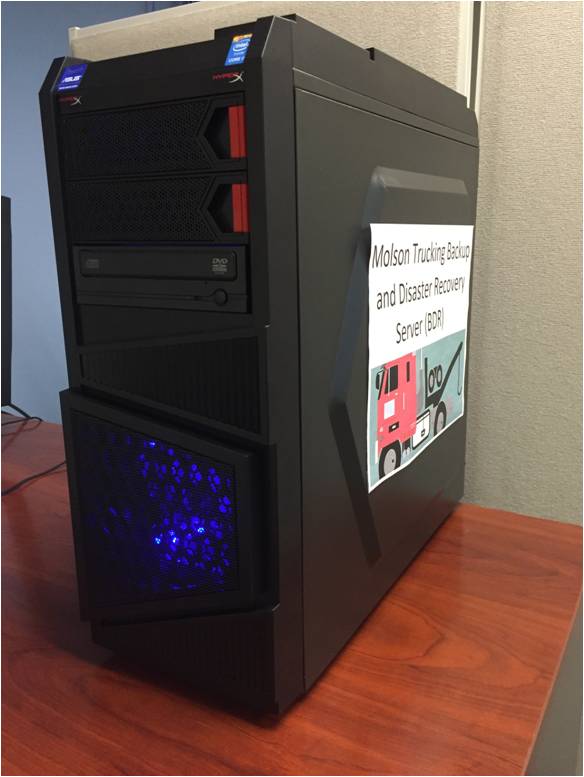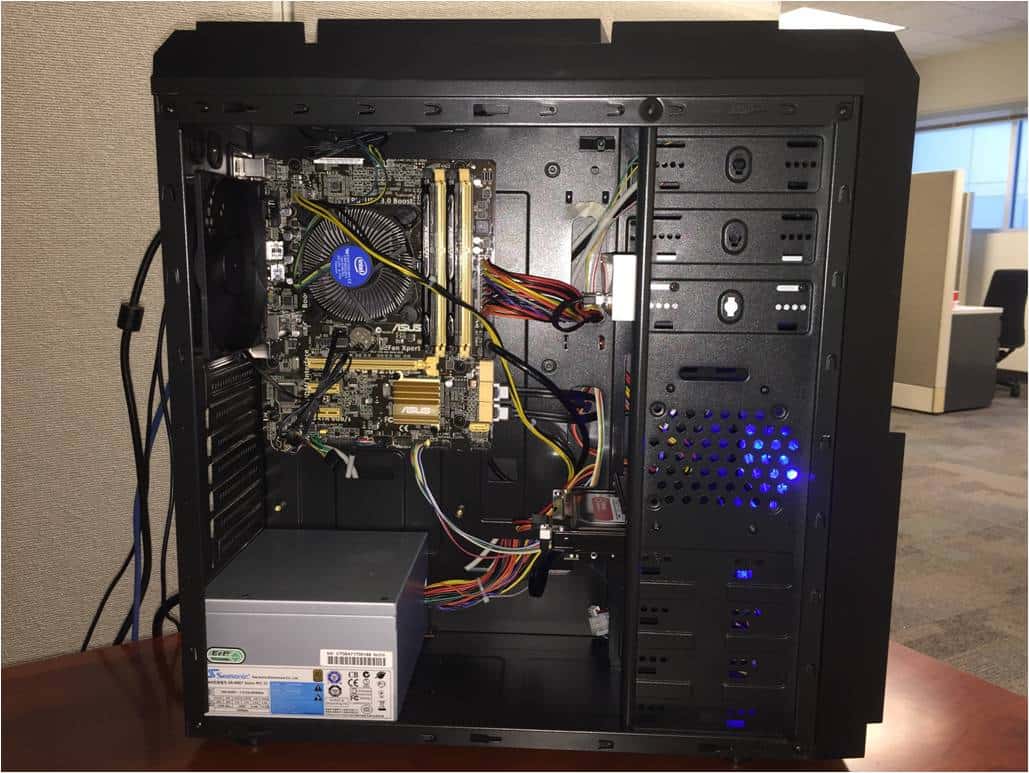Build your own BDR Shopping List
What’s a BDR anyway?
There’s a lot of talk about BDRs these days, but what a BDR is and how they can be used may be unclear. First off, BDR stands for backup and disaster recovery machine. Different backup solutions can utilize BDRs in different ways. In simple terms, a BDR is a server that acts as the primary storage for backups, a central point of control for managing the backups locally and also has enough power to virtualize backups temporarily if needed.

The major benefit of having a BDR is the ability to virtualize a failed server on demand. If that’s not a major concern for your situation, you can get away with using either a NAS or a USB external hard drive. (For externals, we suggest one that’s powered by a wall socket, not USB only.) But if virtualizing on demand is an option you’d like to have, a BDR is the way to go.
Build your own BDR Shopping List
Consumers have an unprecedented ability to research products before buying them. The impact of e-commerce on modern society can not be overstated. While the Gillware team recommends these choices, it is always prudent to do your own research.
A typical BDR will have an Intel i5 or i7 processor, appropriate storage (we suggest three times the used storage on the server being backed up), 16GB of RAM, a quality motherboard, case and power supply. We’ll be showing you a sample BDR built by Gillware. The total cost for this unit was $610.

Processor: The core of a computer is its processor, and we selected Intel’s i5-4460 as our best-fit for cost model. Intel’s i5 line of processors offer excellent per-core performance, and come with the VT-x feature, which is required for virtualizing a backup chain in the case of a disaster. It has four physical cores, which will allow you to virtualize a more powerful server and still get acceptable speed. Price: $185
Matched with the processor are the motherboard, an ASUS B85M-G, and a HyperX 8GB stick of RAM sold as a three-piece combo deal by Newegg. These are known as DIY PCs on Newegg’s website, and they’re a great cost-effective starting point for a BDR.
Motherboard: The motherboard is using the B85 chipset, which is a less feature-heavy chipset by Intel, but in return, costs less. Since our build didn’t need any of the features not included, we decided to save some money and go with the cheaper option while still buying a brand name we trust. The Q87, H87, Z87, H97, and Z97 chipsets all offer more features, so make sure you understand what features you need and choose appropriately. Intel makes it easy to research what their different product lines offer, so make sure you know what you’re getting, and get what you need. Price: $65
RAM: The DIY kit we selected came with 8GB of ram, and we expanded it to 16GB buy buying a second stick identical to the one the kit came with. 16GB of ram will afford programs like SQL or Exchange more memory in their virtualized state, making the transition from disaster to temporary virtualization to physical restore much smoother. Price: $60
Hard Drive: We selected a 1TB Western Digital Red drive for our storage. WD Red drives aren’t as fast as some other drives, but they’re much more reliable than consumer-grade drives, and failed drives can land systems in our recovery lab, even with a backup. For this BDR, we didn’t include a RAID array, but a RAID 1 is an excellent idea for better protecting data. Price: $65
Power Supply: The power supply in our BDR is a SeaSonic brand 400W power supply. For a long time now, SeaSonic has been among the best manufacturers of power supplies, and selecting the right power supply can be very difficult. Most brands source from multiple OEMs, but SeaSonic manufactures their own power supplies, so it’s easy to trust their brand. Price: $42
DVD-ROM Drive: All modern DVD drives are basically the same in form and function, so as long as the one you choose has x24 DVD write and x48 CD write, the specific model doesn’t matter. The least expensive is fine, usually this is a Lite-On or Samsung. We chose a Samsung DVD drive for our BDR. Price: $20
Case: Our case is a Rosewill Galaxy-03, an ATX mid tower case featuring all the modern conveniences you expect from a case. It has a USB 3.0 header for the front panel, a unique and stylish look, port holes in the motherboard panel for cable management, and it comes with case fans to ensure good airflow. It’s a less expensive, but still excellent case. Price: $50
Operating System: Finally, we chose Windows 8.1 Pro 64-bit for our operating system. A BDR generally doesn’t need a server OS, so you can save some money buying a license for a much less expensive desktop OS. We ran into some minor complications with Windows 10, so we suggest you avoid that for now. Price: $140
After the combo discount of $17, the total cost of the unit came to $610. As we stated, different features needs allow you flexibility with the cost of different parts, so your own BDR could cost more or less, depending on your customer’s needs.
Why a BDR?
Not only does using a BDR offer you faster restore times and more management capabilities, it also puts a physical piece of hardware in your client’s office that both looks professional and reminds them of the backup service you’re providing for them. Being able to provide custom built hardware adds value to the solution you are selling to your customer and reinforces the value of your services.
